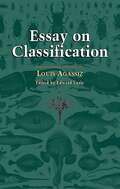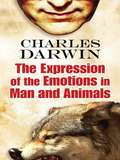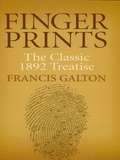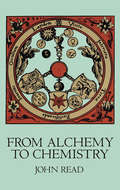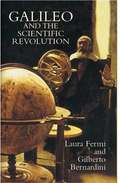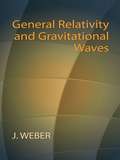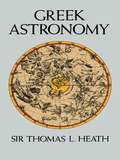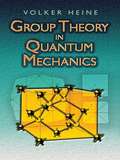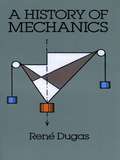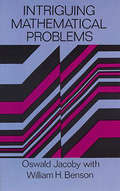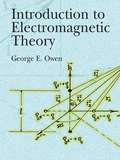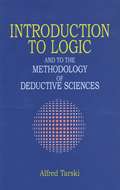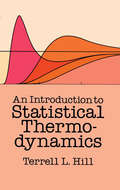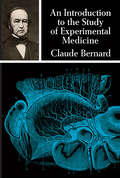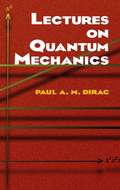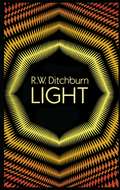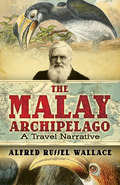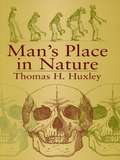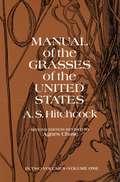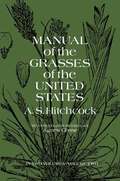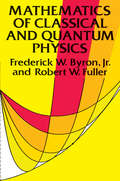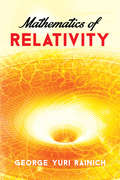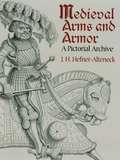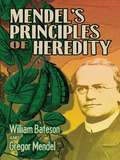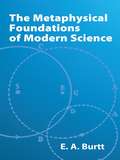- Table View
- List View
Essay on Classification
by Louis AgassizA major influence on the development of American scientific culture, Swiss-born Louis Agassiz (1807–73) was one of the great scientists of his day. A student of anatomist Georges Cuvier, Agassiz adapted his teacher's pioneering techniques of comparative anatomy to paleontology, and he rose to prominence as a distinguished systematist, paleontologist, and educator. Agassiz introduced science to ordinary citizens to an unprecedented degree; people around the world read his books, sent him specimens, and consulted his opinion. Agassiz was also a staunch opponent of the theory of evolution, and he was among the last of the reputable scientists who continued to reject the concept after the publication of The Origin of the Species. All of nature bore testimony to a divine plan, Agassiz believed, and he could not reconcile himself to a theory that did not invoke God's design. Ironically, his 1851 Essay on Classification provided Darwin and other evolutionists with evidence from the fossil record to support the theory of natural selection. A treasure of historically valuable insights that contributed to the development of evolutionary biology, this volume introduced the landmark contention that paleontology, embryology, ecology, and biogeography are inextricably linked in classifications that reveal the true relationships between organisms. Its emphasis on advanced and original work gave major impetus to the study of science directly from nature, and it remains a classic of American scientific literature.
The Expression of the Emotions in Man and Animals (Barnes and Noble Digital Library)
by Charles DarwinIn this highly readable study, one of the great pioneers of modern science examines how people and animals display varieties of emotions via their facial expressions. British naturalist Charles Darwin--who expounded the theory of evolution by natural selection, the principle that launched a scientific revolution—based this survey on his personal observations. Most of his findings were proven by later research, and today's behavioral scientists continue to draw upon this work for both knowledge and inspiration.A bestseller when it was first published in 1872, Darwin's inquiry addresses issues related to human origins and psychology in terms of evolutionary values. His methods include the study of facial expressions in infants and children, the insane, animals, painting and sculpture, and among people in different cultures. Also notable is the fact that this is one of the first books to employ photographs in the interests of science. Abounding in anecdotes and literary quotations, the work offers a direct approach that makes it accessible to professionals and amateurs alike—in fact, to anyone with an inquiring mind.
Finger Prints: The Classic 1892 Treatise
by Francis GaltonLandmark discusses the evidence validating fingerprints as a means of personal identification, permanence of the fingerprint characteristics, uniqueness of an assemblage of ridge details, and the variability and classifiable nature of finger patterns -- along with such fundamental investigations as biological and racial variations and the inheritance of fingerprint traits. 34 tables. 15 plates.
From Alchemy to Chemistry (Dover Science Books)
by John ReadWritten for the layman, this accessible history takes a broad, humanistic perspective, eschewing chemical equations and formulae. Instead it concentrates on the great figures of chemistry and the ideas that revolutionized the science, from earliest history to the modern era.Much of the book is devoted to alchemy and such topics as the philosopher's stone, alchemical crypticism and symbolism, pseudo-alchemists, Paracelsus, and the "swan song" of alchemy as the scientific revolution took hold. In the final chapters, the author takes up the development of modern chemistry, including atomic theory, the nature of the elements, the beginning of organic chemistry, and more. Broad in scope, erudite yet readable, this rich and absorbing narrative will appeal to anyone interested in the long and colorful history of chemical science. Glossary. 50 illustrations.
Galileo and the Scientific Revolution
by Laura Fermi Gilberto BernardiniAn absorbing account of the origins of modern science as well as a biography of the revolutionary thinker, this inspiring book was co-written by a former director of the Italian Institute for Nuclear Physics and a historian of science (who was also the wife of physicist Enrico Fermi). It begins in Galileo's youth, with his return to his native city of Pisa to train as a physician. Instead, the student became captivated by the power of mathematical reasoning — an interest that led him to apply mathematical logic to natural events and, ultimately, to invent the concept of experimentation. Galileo's progress from student to teacher to scientific innovator is traced, with particular emphasis on his experiments with building and refining telescopes and his unprecedented observations of the moon and planets. The dramatic results of his findings, including his refutation of Aristotelian theory and his support of Copernican doctrine, are related in full, along with his clash with the papal inquisition and his tragic demise under house arrest. Written with a warm appreciation for the wonders of Galileo's achievements and with impeccable scholarship, this book concludes with a survey of the scientist's remarkable legacy. 12 figures. Appendix. Bibliography. Index.
General Relativity and Gravitational Waves
by J. WeberAn internationally famous physicist and electrical engineer, the author of this text was a pioneer in the investigation of gravitational waves. Joseph Weber's General Relativity and Gravitational Waves offers a classic treatment of the subject. Appropriate for upper-level undergraduates and graduate students, this text remains ever relevant. Brief but thorough in its introduction to the foundations of general relativity, it also examines the elements of Riemannian geometry and tensor calculus applicable to this field.Approximately a quarter of the contents explores theoretical and experimental aspects of gravitational radiation. The final chapter focuses on selected topics related to general relativity, including the equations of motion, unified field theories, Friedman's solution of the cosmological problem, and the Hamiltonian formulation of general relativity. Exercises. Index.
Greek Astronomy
by Thomas HeathAstronomy as a science began with the Ionian philosophers, with whom Greek philosophy and mathematics also began. While the Egyptians and Babylonians had accomplished much of astronomical worth, it remained for the unrivalled speculative genius of the Greeks, in particular, their mathematical genius, to lay the foundations of the true science of astronomy. In this classic study, a noted scholar discusses in lucid detail the specific advances made by the Greeks, many of whose ideas anticipated the discoveries of modern astronomy.Pythagoras, born at Samos about 572 B.C., was probably the first to hold that the earth is spherical in shape, while his later followers anticipated Copernicus with the then-startling hypothesis that the earth was not the center of the universe but a planet like the others. Heraclides of Pontus (c. 388-315 B.C.), a pupil of Plato, declared that the apparent daily rotation of the heavenly bodies is due, not to a rotation of the heavenly sphere about an axis through the center of the earth, but to the rotation of the earth itself around its own axis. Secondly, Heraclides discovered that Venus and Mercury revolve around the sun like satellites. Perhaps the greatest astronomer of antiquity was Hipparchus, who flourished between 161 and 126 B.C. He compiled a catalog of fixed stars to the number 850 or more, made great improvements in the instruments used for astronomical observations, and discovered the precession of the equinoxes, among other accomplishments. The astronomy of Hipparchus takes its definitive form in the Syntaxis (commonly called the Almagest) of Ptolemy, written about A.D. 150, which held the field until the time of Copernicus.The extraordinary achievements of these and many more Greek theorists are given full coverage in this erudite account, which blends exceptional clarity with a readable style to produce a work that is not only indispensable for astronomers and historians of science but easily accessible to science-minded lay readers.
Group Theory in Quantum Mechanics: An Introduction to Its Present Usage
by Volker HeineGeared toward research students in physics and chemistry, this text introduces the three main uses of group theory in quantum mechanics: (1) to label energy levels and the corresponding eigenstates; (2) to discuss qualitatively the splitting of energy levels, starting from an approximate Hamiltonian and adding correction terms; and (3) to aid in the evaluation of matrix elements of all kinds."The theme," states author Volker Heine, "is to show how all this is achieved by considering the symmetry properties of the Hamiltonian and the way in which these symmetries are reflected in the wave functions." Early chapters cover symmetry transformations, the quantum theory of a free atom, and the representations of finite groups. Subsequent chapters address the structure and vibrations of molecules, solid state physics, nuclear physics, and relativistic quantum mechanics.A previous course in quantum theory is necessary, but the relevant matrix algebra appears in an appendix. A series of examples of varying levels of difficulty follows each chapter. They include simple drills related to preceding material as well as extensions of theory and further applications. The text is enhanced with 46 illustrations and 12 helpful appendixes.
A History of Mechanics
by René DugasIn this masterful synthesis and summation of the science of mechanics, Rene Dugas, a leading scholar and educator at the famed Ecole Polytechnique in Paris, deals with the evolution of the principles of general mechanics chronologically from their earliest roots in antiquity through the Middle Ages to the revolutionary developments in relativistic mechanics, wave and quantum mechanics of the early 20th century.The present volume is divided into five parts: The first treats of the pioneers in the study of mechanics, from its beginnings up to and including the sixteenth century; the second section discusses the formation of classical mechanics, including the tremendously creative and influential work of Galileo, Huygens and Newton. The third part is devoted to the eighteenth century, in which the organization of mechanics finds its climax in the achievements of Euler, d'Alembert and Lagrange. The fourth part is devoted to classical mechanics after Lagrange. In Part Five, the author undertakes the relativistic revolutions in quantum and wave mechanics.Writing with great clarity and sweep of vision, M. Dugas follows closely the ideas of the great innovators and the texts of their writings. The result is an exceptionally accurate and objective account, especially thorough in its accounts of mechanics in antiquity and the Middle Ages, and the important contributions of Jordanus of Nemore, Jean Buridan, Albert of Saxony, Nicole Oresme, Leonardo da Vinci, and many other key figures.Erudite, comprehensive, replete with penetrating insights, AHistory of Mechanics is an unusually skillful and wide-ranging study that belongs in the library of anyone interested in the history of science.
Intriguing Mathematical Problems (Dover Books on Mathematics)
by Oswald Jacoby William H. BensonAmusing and informative in its approach to solving mathematical bafflers, this treasury of theories, games, puzzles and oddities of all kinds, compiled by one of the world's best card players (Jacoby) and an expert in mathematical recreations (Benson) will delight and fascinate math enthusiasts.Although primarily intended to entertain, the wide variety of puzzles ― ranging from facile curiosities to very difficult intellectual exercises ― will challenge you to keep your mind going full steam. Each of the book's five sections ― "Fun with Numbers," "Fun with Letters," "The Odds: Explorations in Probability," "Where Inference and Reasoning Reign" and "The Answers Are Whole Numbers" ― is made up of approximately 30 problems, with solutions grouped at the end of each section. Math buffs will love testing their puzzle-solving skills on such challenging brainteasers as The Enterprising Snail, Mrs. Crabbe and the Bacon, The Fly and the Bicycles, The Lovesick Cockroaches, The Three Prisoners, Girls Should Live in Brooklyn, Who Was Executed?, Creaker vs. Roadhog, The Crossed Ladders, The Ancient Order of the Greens, and many more.Few of these problems require any advanced mathematical knowledge or prowess. You'll find that simply keeping your wits about you and your logical skills honed are all you need to enjoy a delightful and thought-provoking adventure in recreational mathematics. Foreword. 10 illustrations. 14 tables.
Introduction to Electromagnetic Theory
by George E. OwenA direct, stimulating approach to electromagnetic theory, this text employs matrices and matrix methods for the simple development of broad theorems. The author uses vector representation throughout the book, with numerous applications of Poisson's equation and the Laplace equation (the latter occurring in both electronics and magnetic media). Contents include the electrostatics of point charges, distributions of charge, conductors and dielectrics, currents and circuits, and the Lorentz force and the magnetic field. Additional topics comprise the magnetic field of steady currents, induced electric fields, magnetic media, the Maxwell equations, radiation, and time-varying current circuits.Geared toward advanced undergraduate and first-year graduate students, this text features a large selection of problems. It also contains useful appendixes on vector analysis, matrices, elliptic functions, partial differential equations, Fourier series, and conformal transformations. 228 illustrations by the author. Appendixes. Problems. Index.
Introduction to Logic: and to the Methodology of Deductive Sciences (Oxford Logic Guides #24)
by Alfred TarskiFirst published in Polish in 1936, this classic work was originally written as a popular scientific book — one that would present to the educated lay reader a clear picture of certain powerful trends of thought in modern logic. According to the author, these trends sought to create a unified conceptual apparatus as a common basis for the whole of human knowledge.Because these new developments in logical thought tended to perfect and sharpen the deductive method, an indispensable tool in many fields for deriving conclusions from accepted assumptions, the author decided to widen the scope of the work. In subsequent editions he revised the book to make it also a text on which to base an elementary college course in logic and the methodology of deductive sciences. It is this revised edition that is reprinted here.Part One deals with elements of logic and the deductive method, including the use of variables, sentential calculus, theory of identity, theory of classes, theory of relations and the deductive method. The Second Part covers applications of logic and methodology in constructing mathematical theories, including laws of order for numbers, laws of addition and subtraction, methodological considerations on the constructed theory, foundations of arithmetic of real numbers, and more. The author has provided numerous exercises to help students assimilate the material, which not only provides a stimulating and thought-provoking introduction to the fundamentals of logical thought, but is the perfect adjunct to courses in logic and the foundation of mathematics.
An Introduction to Statistical Thermodynamics (Dover Books On Physics Series)
by Terrell L. HillAlthough written on an introductory level, this wide-ranging text provides extensive coverage of topics of current interest in equilibrium statistical mechanics. Indeed, certain traditional topics are given somewhat condensed treatment to allow room for a survey of more recent advances.The book is divided into four major sections. Part I deals with the principles of quantum statistical mechanics and includes discussions of energy levels, states and eigenfunctions, degeneracy and other topics. Part II examines systems composed of independent molecules or of other independent subsystems. Topics range from ideal monatomic gas and monatomic crystals to polyatomic gas and configuration of polymer molecules and rubber elasticity. An examination of systems of interacting molecules comprises the nine chapters in Part Ill, reviewing such subjects as lattice statistics, imperfect gases and dilute liquid solutions. Part IV covers quantum statistics and includes sections on Fermi-Dirac and Bose-Einstein statistics, photon gas and free-volume theories of quantum liquids.Each chapter includes problems varying in difficulty — ranging from simple numerical exercises to small-scale "research" propositions. In addition, supplementary reading lists for each chapter invite students to pursue the subject at a more advanced level. Readers are assumed to have studied thermodynamics, calculus, elementary differential equations and elementary quantum mechanics.Because of the flexibility of the chapter arrangements, this book especially lends itself to use in a one-or two-semester graduate course in chemistry, a one-semester senior or graduate course in physics or an introductory course in statistical mechanics.
An Introduction to the Study of Experimental Medicine
by Claude BernardClear and penetrating presentation of the basic principles of scientific research from the great French physiologist whose contributions in the 19th century included the discovery of vasomotor nerves; nature of curare and other poisons in human body; functions of pancreatic juice in digestion; elucidation of glycogenic function of the liver.
Lectures on Quantum Mechanics
by Paul A. DiracThe author of this concise, brilliant series of lectures on mathematical methods in quantum mechanics was one of the shining intellects in the field, winning a Nobel prize in 1933 for his pioneering work in the quantum mechanics of the atom. Beyond that, he developed the transformation theory of quantum mechanics (which made it possible to calculate the statistical distribution of certain variables), was one of the major authors of the quantum theory of radiation, codiscovered the Fermi-Dirac statistics, and predicted the existence of the positron.The four lectures in this book were delivered at Yeshiva University, New York, in 1964. The first, "The Hamiltonian Method," is an introduction to visualizing quantum theory through the use of classical mechanics. The remaining lectures build on that idea. "The Problem of Quantization" shows how one can start with a classical field theory and end up with a quantum field theory. In "Quantization on Curved Surfaces," Dirac examines the possibility of building a relativistic quantum theory on curved surfaces. He deduces that it is not possible, but it should be possible on flat surfaces. In the final lecture, "Quantization on Flat Surfaces," he concludes that "we can set up the basic equations for a quantum theory of the Born-Infeld electrodynamics agreeing with special relativity, but [not] with general relativity." Physics and chemistry students will find this book an invaluable addition to their libraries, as will anyone intrigued by the far-reaching and influential ideas of quantum mechanics.
Light
by R. W. DitchburnThis classic study, available for the first time in paperback, clearly demonstrates how quantum theory is a natural development of wave theory, and how these two theories, once thought to be irreconcilable, together comprise a single valid theory of light. Aimed at students with an intermediate-level knowledge of physics, the book first offers a historical introduction to the subject, then covers topics such as wave theory, interference, diffraction, Huygens' Principle, Fermat's Principle, and the accuracy of optical measurements. Additional topics include the velocity of light, relativistic optics, polarized light, electromagnetic theory, and the quantum theory of radiation. The more difficult mathematics has been placed in appendixes, or in separated paragraphs in small type, intended to be omitted on first reading. Examples and/or references follow each chapter to assist the student in absorbing the material and to suggest additional resources.
The Malay Archipelago: A Travel Narrative
by Alfred Russel WallaceWritten by a famed 19th-century scientist who laid the groundwork for much of modern biology, this influential work remains one of the great classics of natural history and travel. Detailing his eight-year exploration of the Malay Archipelago, Wallace offers observations of the native people of the island groupings, the abundant and strange animals and insects, and more.
Man's Place in Nature
by Thomas H. HuxleyKnown as "Darwin's Bulldog" for his impassioned defense of evolutionary theory, Thomas Huxley published this, his most famous book, just a few years after Darwin's The Origin of the Species. Unlike Origin, this book focuses on human ancestry and offers a concise, nontechnical survey of the state of mid-nineteenth-century knowledge about primate and human paleontology and ethology.Man's Place in Nature concurs with Darwin's assertion of the absence of a physiologic and psychic structural line of demarcation between humans and apes. Huxley ventures further than Darwin, however, by making the first attempt to apply the principles of evolution directly to the human race (an issue that Darwin skirted). Despite Huxley's acknowledgements of the wide gulf represented by the human capacity for rational speech and language, some Victorian readers were scandalized by the application of Darwinian theory to humans and by Huxley's evidence of the fundamental similarities between the human brain and the ape brain. A landmark of scientific progress, this immensely readable book reflects the stylistic gifts that made its author a popular public speaker.
Manual of the Grasses of the United States, Volume One
by A. S. U.S. Dept. of Agriculture A. S. HitchcockThis work is actually the definitive encyclopedia of United States grass life. Compiled from the U.S. National Herbarium collection, the largest of its kind in the world, it is the only complete manual of U.S. grasses available and one of the basic reference works on U.S. plant life. It catalogs and describes in detail all 1,398 numbered species in 169 numbered genera found in this country, plus 120 species in 16 genera of the so-called “waifs.” Professor Hitchcock is the former Chief Botanist in charge of systematic agrostology for the U.S. Department of Agriculture, by whom the work was originally published, and an internationally known authority.The heart of the book is its detailed descriptions of the family of grasses, the two main subfamilies, the tribes, genera, and species. Quick finding keys are provided for the identification of tribes and genera. Each of the species is given thorough botanical description, including various aspects of its morphology — size, shape, form of culms, blades, panicles, spikes, and flowers — and height, proper planting season, and range of distribution are noted. The Manual also outlines the common uses to which grasses are put and discusses in general terms their distribution, classification, nomenclature, and common names. The 1,199 drawings make identification of any grass species found in the United States a virtual certainty. The appended synonymy of alternate names for each species provides an authoritative taxonomy, eliminating confusion.The nature lover with no more technical equipment than a keen eye can use this manual with profit, for a glossary of botanical terms is included. Naturalists, botanists, agriculturists, and horticulturists will find it valuable as a field and research guide to virtually all the grasses that grow in this country.
Manual of the Grasses of the United States, Volume Two
by A. S. U.S. Dept. of Agriculture A. S. HitchcockThis work is actually the definitive encyclopedia of United States grass life. Compiled from the U.S. National Herbarium collection, the largest of its kind in the world, it is the only complete manual of U.S. grasses available and one of the basic reference works on U.S. plant life. It catalogs and describes in detail all 1,398 numbered species in 169 numbered genera found in this country, plus 120 species in 16 genera of the so-called “waifs.” Professor Hitchcock is the former Chief Botanist in charge of systematic agrostology for the U.S. Department of Agriculture, by whom the work was originally published, and an internationally known authority.The heart of the book is its detailed descriptions of the family of grasses, the two main subfamilies, the tribes, genera, and species. Quick finding keys are provided for the identification of tribes and genera. Each of the species is given thorough botanical description, including various aspects of its morphology — size, shape, form of culms, blades, panicles, spikes, and flowers — and height, proper planting season, and range of distribution are noted. The Manual also outlines the common uses to which grasses are put and discusses in general terms their distribution, classification, nomenclature, and common names. The 1,199 drawings make identification of any grass species found in the United States a virtual certainty. The appended synonymy of alternate names for each species provides an authoritative taxonomy, eliminating confusion.The nature lover with no more technical equipment than a keen eye can use this manual with profit, for a glossary of botanical terms is included. Naturalists, botanists, agriculturists, and horticulturists will find it valuable as a field and research guide to virtually all the grasses that grow in this country.
Mathematics of Classical and Quantum Physics (Dover Books on Physics)
by Robert W. Fuller Frederick W. Byron Jr.This textbook is designed to complement graduate-level physics texts in classical mechanics, electricity, magnetism, and quantum mechanics. Organized around the central concept of a vector space, the book includes numerous physical applications in the body of the text as well as many problems of a physical nature. It is also one of the purposes of this book to introduce the physicist to the language and style of mathematics as well as the content of those particular subjects with contemporary relevance in physics.Chapters 1 and 2 are devoted to the mathematics of classical physics. Chapters 3, 4 and 5 — the backbone of the book — cover the theory of vector spaces. Chapter 6 covers analytic function theory. In chapters 7, 8, and 9 the authors take up several important techniques of theoretical physics — the Green's function method of solving differential and partial differential equations, and the theory of integral equations. Chapter 10 introduces the theory of groups. The authors have included a large selection of problems at the end of each chapter, some illustrating or extending mathematical points, others stressing physical application of techniques developed in the text.Essentially self-contained, the book assumes only the standard undergraduate preparation in physics and mathematics, i.e. intermediate mechanics, electricity and magnetism, introductory quantum mechanics, advanced calculus and differential equations. The text may be easily adapted for a one-semester course at the graduate or advanced undergraduate level.
Mathematics of Relativity
by George Yuri RainichBased on the ideas of Einstein and Minkowski, this concise treatment is derived from the author's many years of teaching the mathematics of relativity at the University of Michigan. Geared toward advanced undergraduates and graduate students of physics, the text covers old physics, new geometry, special relativity, curved space, and general relativity.Beginning with a discussion of the inverse square law in terms of simple calculus, the treatment gradually introduces increasingly complicated situations and more sophisticated mathematical tools. Changes in fundamental concepts, which characterize relativity theory, and the refinements of mathematical technique are incorporated as necessary. The presentation thus offers an easier approach without sacrifice of rigor.
Medieval Arms and Armor: A Pictorial Archive
by J. H. Hefner-AlteneckA renowned 19th-century cultural historian and specialist on the Middle Ages, J. H. Hefner-Alteneck spent much of his life observing the influence of art on many aspects of human life, including weaponry. His illustrations for this handsome archive — drawn with incredible exactitude — depict a wide array of medieval weapons and armor dating from the early ninth century to the mid-1700s.Adapted primarily from decorative ornamentation on burial monuments and manuscripts, hundreds of finely executed images depict authentic shields, swords, crossbows, helmets, and highly ornate suits of body armor for knights and their steeds. Newly translated descriptive notes, extracted from the original German text, identify the subjects. First published more than 100 years ago, this meticulously rendered study remains an invaluable source of permission-free illustrations for artists and designers and an indispensable reference for scholars, collectors, and hobbyists.
Mendel's Principles of Heredity
by William Bateson Gregor MendelSix years after Charles Darwin announced his theory of evolution to the world, Gregor Mendel began studying the inheritance of traits in pea plants. Mendel's research led to his discovery of dominant and recessive traits and other facts of evolution, which he reported in his groundbreaking 1865 paper, Experiments in Plant Hybridization. His findings languished until 1902, when William Bateson revived interest in the subject with this book, a succinct account of Mendel's heredity-related discoveries. Bateson coined the term "genetics" to refer to heredity and inherited traits, and his rediscovery of Mendel's work forms the foundation of today's field of genetics.Suitable for biology and general science students at the undergraduate and graduate levels, this volume is essential reading for anyone with an interest in science and genetics. In addition to Bateson's commentary, it features two of Mendel's papers--including the original Experiments--plus a biography of Mendel, a detailed bibliography, and indexes of subjects and authors. Numerous figures complement the text, along with eight pages of color illustrations.
The Metaphysical Foundations of Modern Science
by E. A. BurttTo the medieval thinker, man was the center of creation and all of nature existed purely for his benefit. The shift from the philosophy of the Middle Ages to the modern view of humanity’s less central place in the universe ranks as the greatest revolution in the history of Western thought, and this classic in the philosophy of science describes and analyzes how that profound change occurred. A fascinating analysis of the works of Copernicus, Kepler, Galileo, Descartes, Hobbes, Gilbert, Boyle, and Newton, it not only establishes the reasons for the triumph of the modern perspective, but also accounts for certain limitations in this view that continue to characterize contemporary scientific thought. A criticism as well as a history of the change that made possible the rise of modern science, this volume is also a guide to understanding the methods and accomplishments of the great philosopher-scientists of the sixteenth and seventeenth centuries.
